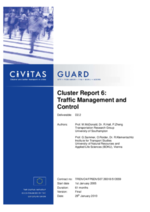Introducing new traffic signals
Summary
Instead of being pre-programmed, Malmo’s new traffic signals were designed to be able to adapt to the actual traffic situation, giving priority to public transport vehicles and cutting journey times.Photo credit: Mats Persson
Implementing sustainable mobility
Adaptive traffic signals are an established way of reducing delays and congestion, but there is little experience of such systems in Scandinavia. However, conditions were ideal for Malmo to be used as a demonstration site for adaptive traffic signals, showing how they can reduce emissions and solve congestion problems.
Prior to measure implementation, the traffic signals in Malmo had fixed time settings for peak and off-peak hours. During these periods traffic speeds were slow, with queues building up through two or three intersections and correspondingly high levels of emissions.
The measure focused on installing adaptive signal controls at 10 traffic lights in Malmo to give priority to public transport, cyclists and pedestrians. The controls at the 10 intersections were connected and coordinated, ensuring a green wave during peak hours and allowing the system as a whole to work more efficiently.
Progress
The new equipment (Utopia/SPOT) was installed in summer 2008, since when the system has been continuously monitored and adjusted to ensure maximum impact.
Outcomes
Traffic flow was evaluated on three routes, and it was found that average travel times were in fact higher, average speeds slower and fuel consumption higher after measure implementation, although the negative impact was not significant. It is likely that the system was not operating optimally during the test period.









